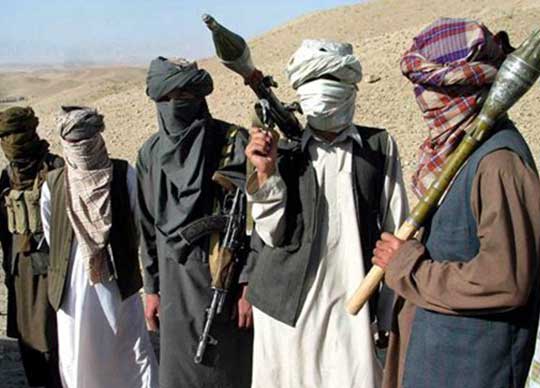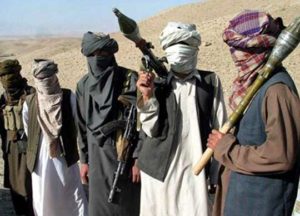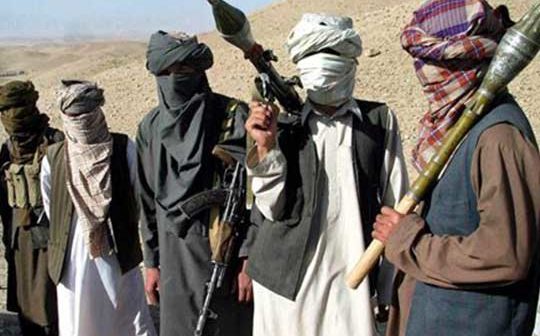
Published With Permission
BESA Center Perspectives Paper No. 2,158, September 23, 2021
By Dr. Reza Parchizadeh

Taliban, image by ifpnews CC
The American decision to leave Afghanistan to lessen the burden on the domestic economy, protect US troops, boost the nation’s security, and put an end to the “Forever War” in the Middle East has delivered the opposite of all those objectives and made the world a more dangerous place.
The beginnings of Afghanistan’s miseries, which led to the disastrous rise of the extremist Taliban and which are turning the failed state into a major threat to the democratic world, can be traced back to the 1970s, when an explosive mix of Soviet Communism and native Islamism started to blow back against Western liberal ideals in Afghanistan.
At that time, Muhammad Zahir Shah had been on the country’s throne for four decades. The mild-mannered, Western-educated king wished to modernize his country. He introduced a constitutional democracy and tried to open up the civil sphere by granting universal suffrage, promoting civil rights, and enfranchising women in what was a highly conservative tribal society.
However, in July 1973, the king’s influential cousin, Gen. Muhammad Daoud Khan, who, as his prime minister, had been sacked due to his hawkish stance toward neighboring Pakistan over old border disputes, ousted Zahir Shah through a bloodless coup and installed himself as the autocratic president of the newly constituted one-party Republic of Afghanistan.
This was at the height of the Cold War, and the USSR was hungry for client states in South Asia to offset the strong American presence in the Middle East. At first, because Daoud had demonstrated socialist, pro-Soviet tendencies, the USSR welcomed his rise to power. But when he tried to distance himself from the Soviets and ordered a purge of the communists, Daoud and his family were massacred by his erstwhile allies, the communist People’s Democratic Party of Afghanistan (PDPA).
The Soviet-backed PDPA formed several chaotic governments in Afghanistan, but failed to establish itself as the legitimate ruling party amid continued infighting and insurgency. When the situation became untenable, the Soviets, fearing the fall of their client state, finally intervened, sending the Red Army to occupy Afghanistan in late 1978. The following year, the Islamic Revolution in neighboring Iran put the US on the back foot in the region.
Internal mayhem combined with foreign occupation sent Afghanistan back to the Stone Age. Fledgling democratic institutions vanished into thin air and nascent civil rights were nipped in the bud. The Westernized army and modern police force collapsed and their troops and weapons scattered among the communists and the insurgents. Under these circumstances, the tribal, religiously motivated militias known as the mujahedeen were the only force to put up any resistance to the Soviet juggernaut.
Naturally, the US threw its weight behind the mujahedeen. In a massive security project called Operation Cyclone that would ultimately cost billions of dollars, the CIA financed the Afghan resistance against the USSR. Iran, Saudi Arabia, China, and the UK also made significant contributions to the anti-Soviet war effort. However, with most international aid being channeled to the mujahedeen through Pakistan, the lion’s share ended up in the hands of the most radical elements of the insurgency supported by that country’s Islamist government.
In 1989, the Cold War was in its twilight. The Soviet Union, still facing stiff resistance from the mujahedeen and now in its death throes, finally withdrew the Red Army from Afghanistan. The country was now without a unifying archenemy, democratic and civil institutions, or any culture of inclusiveness or tolerance. What Afghanistan did have was a profusion of both Eastern and Western arms. The tribal warlords turned against one another and plunged the devastated country into civil war.
This paved the way for the emergence of the Taliban Islamist extremists in the mid-1990s, who swept through Afghanistan in a blitz and conquered Kabul in 1996. The Taliban ruled through a draconian version of sharia law that dispensed with Western ideas of human rights and particularly targeted women and girls. The country festered with Islamist radicalism and terrorism, finally leading to the catastrophic al-Qaeda attacks on the American homeland. By the time the US government finally resolved to react, much irreparable damage had already been done to America and the world.
Now, thanks to the ill-conceived pullout of US troops, the corrupt, dysfunctional, yet quasi-democratic, peaceful, and Western-friendly government of Afghanistan has collapsed, and the country has been reconquered by the extremist Taliban. The pullout has claimed the lives of 13 American servicemen and many more Afghan civilians so far, and the War on Terror remains largely unresolved. Many observers fear that Afghanistan will descend into darkness once more and turn into a hub of apocalyptic militant cults such as al-Qaeda, ISIS, and the Muslim Brotherhood, which are bent on terrorizing the world and setting up a global Islamic caliphate.
Even worse, hostile regimes such as those of Iran, Russia, and China have wasted no time in exploiting the failed state left behind by the US. Their common objective is to pull Afghanistan into their respective spheres of influence and turn it into a forward base of operations for global domination. Now that they have observed America’s failure to stand up for its values and defend its citizens and friends in Afghanistan, those enemies will be more aggressive in their own specific ways.
The Iranian regime in particular is already taking advantage of the Western confusion over Afghanistan to speed its rush toward a nuclear bomb, which would threaten the whole world. At the same time, it is intensifying and expanding its regional mayhem, which will be directed primarily against Israel, the US, and the allies of the US in the Middle East.






